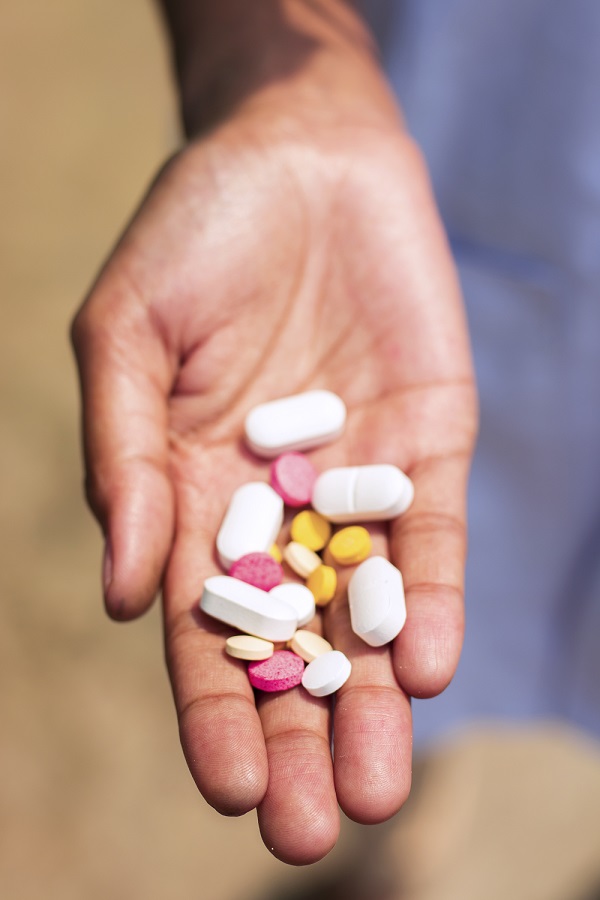
Category
ComplianceCreation date
The EPA’s New Pharma Waste Rule, going into effect beginning in August 2019, creates new Management Standards for Hazardous Waste Pharmaceuticals.
Why the Change?
According to the EPA’s press release, the new regulation resulted from two main concerns. The EPA first cites the concern of water contamination from flushing pharmaceuticals resulting in possible negative effects to drinking water, ecosystems and more. The second main reason cited by the EPA is the need for specific guidelines for the management of pharma waste.
EPA says, “With this final rule, EPA strives to improve compliance at healthcare facilities (including hospitals, clinics, and retail stores with pharmacies) and reverse distributors that generate and manage hazardous waste pharmaceuticals to improve environmental protection. Specifically, EPA enhances public health protection by decreasing the risk of diversion of unused hazardous waste prescription pharmaceuticals onto the black market by requiring basic tracking of these pharmaceuticals from healthcare facilities to reverse distributors. Additionally, this final rule creates an environmentally preferable, convenient and practical management system that EPA encourages the healthcare sector to use for all waste pharmaceuticals.”
Who is Affected?
If your business is a Healthcare Provider or Pharmaceutical Reverse Distribution this new regulation may impose new obligations. Pharmaceutical Manufacturers are not affected by this rule.
The new regulation introduces several changes for healthcare facilities, doctor's offices, hospitals, medical clinics, reverse distributors of pharmaceuticals, veterinary clinics, veterinary hospitals and vitamin retailers.
For more information on who is affected by this new regulation, the EPA explains…
________________________________________________________________________________________________________________
Contact Tradebe’s Team
Tradebe has provided Turnkey Environmental Services to the Pharma, Biotech, Healthcare industries and more for nearly 40 years. Tradebe’s team has the knowledge and experience to assist you in managing your hazardous waste utilizing the most sustainable recycling methods available.
Contact us now to discuss the implications of the New Pharma Rule on your business.
______________________________________________________________________________________
Summary of the New Pharma Rule:
- The EPA finalized the new hazardous waste pharmaceutical rule, (“New Pharma Rule”) Subpart P, (i.e., 40 CFR 266.500), on December 11, 2018.
- The New Pharma Rule was published in the Federal Register on February 22, 2019, and parts will become effective in August 2019.
- The New Pharma Rule changes the way Healthcare Providers and Pharma Reverse Distributor s manage their hazardous waste.
- The New Pharma Rule only applies to pharmaceuticals. The management of non-pharmaceutical hazardous waste at your facility (laboratory waste, universal waste, maintenance waste, etc) is unaffected by this rule.
Key Details of the New Pharma Rule:
“Sewering” Prohibition

- The new rule bans the practice of flushing hazardous waste pharmaceuticals down the drain or toilet (i.e., “sewering”).
- The sewer prohibition applies to all healthcare facilities, including Very Small Quantity Generators, as well as all Reverse Distributors.
- According to the EPA, this will make our drinking and surface water safer and healthier by reducing the amount of hazardous waste pharmaceuticals entering our waterways by an estimated 1,600 – 2,300 tons annually.
Nicotine “P” Hazardous Waste Listing
- The new rule exempts FDA approved over the counter nicotine replacement therapies, such as patches and gum, from meeting the P075 Listed Hazardous Waste definition.
- The EPA believes that since these items are approved for sale and use without doctor supervision, that the risk for fatal exposure from these types of replacement therapies is low and therefore waste of this type can be discarded as non-hazardous waste.
- However, all other unused formulations of Nicotine will still be considered an EPA Hazardous waste bearing the P075 waste code when discarded. Items that will still be listed with the P075 waste code include:
- e-liquids/e-juices in e-cigarettes (which are not FDA approved);
- e-cigarette cartridges or vials;
- legacy pesticides containing Nicotine;
- and Nicotine used in research and manufacturing.
Prescription vs Non-prescription Pharmaceuticals
The New Pharma Rule makes an important distinction between prescription and non-prescription pharmaceuticals.
Prescription pharmaceuticals are considered discarded by a healthcare facility, even if the pharmaceutical is being sent as potentially creditable material to a Reverse Distributor. The healthcare facility must determine if the prescription pharmaceutical is a hazardous waste before sending offsite. Both the healthcare facility and the Reverse Distributor must manage prescription pharmaceuticals that are determined to be a hazardous waste under the Subpart P rule.
Non-prescription pharmaceuticals are viewed differently under the Subpart P rule, which allows healthcare facilities to ship potentially reusable or reclaimable over-the-counter drugs and dietary supplements as recyclable materials to reverse distributors. The reverse distributor will then make the decision to reuse or discard the pharmaceutical and determine if discarded non-prescription pharmaceuticals are RCRA hazardous. Non-prescription pharmaceuticals that are determined to be RCRA hazardous by the reverse distributor must be managed under the standard RCRA regulations.

RCRA Empty Containers
The Subpart P rule now creates an exemption for management of empty containers that contain residues of medications that would have been considered acute hazardous waste (P code). Now, healthcare facilities will no longer need to manage empty pharmaceutical containers as acute hazardous waste.
DEA Controlled Substances
Worth noting also is that the dual regulation for hazardous waste pharmaceuticals that are also Drug Enforcement Agency controlled substances will be eliminated, further easing regulatory burden, according to the EPA.
The Subpart P rule now exempts medications collected during drug take-back programs and events, placing them within the EPA’s household hazardous waste exemption. Subpart P also eliminates the dual RCRA and DEA regulation of hazardous waste pharmaceuticals, deferring to DEA regulations for the management and disposal of controlled substances.
Definitions:
The EPA definition of Pharmaceuticals:
“Pharmaceutical means any drug or dietary supplement for use by humans or other animals; any electronic nicotine delivery system (e.g., electronic cigarette or vaping pen); or any liquid nicotine (e-liquid) packaged for retail sale for use in electronic nicotine delivery systems (e.g., pre-filled cartridges or vials). This definition includes, but is not limited to, dietary supplements, as defined by the Federal Food, Drug and Cosmetic Act; prescription drugs, as defined by 21 CFR 203.3(y); over-the-counter drugs; homeopathic drugs; compounded drugs; investigational new drugs; pharmaceuticals remaining in non-empty containers; personal protective equipment contaminated with pharmaceuticals; and clean-up material from spills of pharmaceuticals. This definition does not include dental amalgam or sharps.”
The EPA definition of Hazardous Waste Pharmaceuticals:
“Hazardous waste pharmaceutical means a pharmaceutical that is a solid waste, as defined in § 261.2, and exhibits one or more characteristics identified in part 261 subpart C or is listed in part 261 subpart D. A pharmaceutical is not a solid waste, as defined in § 261.2, and therefore not a hazardous waste pharmaceutical, if it is legitimately used/reused (e.g., lawfully donated for its intended purpose) or reclaimed. An over-the-counter pharmaceutical, dietary supplement, or homeopathic drug is not a solid waste, as defined in § 261.2, and therefore not a hazardous waste pharmaceutical, if it has a reasonable expectation of being legitimately used/reused (e.g., lawfully redistributed for its intended purpose) or reclaimed.”
Contact Tradebe’s Team
Tradebe’s team has the knowledge and experience to assist you in managing your hazardous waste utilizing the most sustainable recycling methods available.
Contact us now for a Complimentary Compliance Audit to help reduce your liability.
Michael Hauck
Technical Services Training Manager | Tradebe USA
Resources:
EPA’s New Pharma Rule – Press Release
Federal Register for New Pharma Rule
When does the New Pharma Rule take effect?
What is the definition of healthcare facility under the final rule?
What is the definition of reverse distributor under the final rule?


